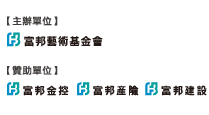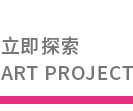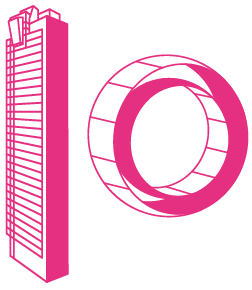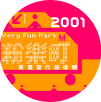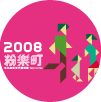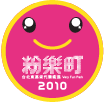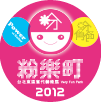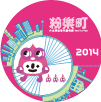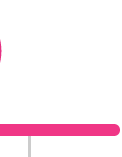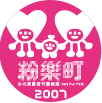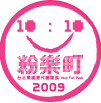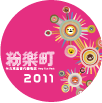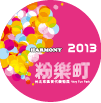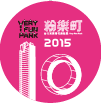Exhibition Outline
Foreword
Curatorial Statement
| 展覽日期 | | | 2015.07.25 (Sat.) - 09.20 (Sun.) |
| 展覽區域 | | | 台北東區捷運板南沿線 |
| 主辦單位 | | | 富邦藝術基金會 |
| 協辦單位 | | | 臺北文創 |
| 贊助單位 | | | 富邦金控、富邦產險、富邦建設 |
| 場地協辦 | | | Home Hotel、大安區仁愛里辦公處、台灣大哥大、台灣創意設計中心、台灣電力公司、富邦人壽、富邦金融中心、富邦旅管、斐瑟旗艦台北、臺北文創有限公司、台北富邦銀行安和分行、1315 coffee、A House、ARTISTA PERFETTO、CH Wedding、HOTDOG TOYZ、i prefer concept、KOOLOOK、mr. hair、papabubble、PASSHION、Pinknic 野餐吧、Superga、Zoo café、好樣喜歡 VVG Chiffon、沐樂動物醫院、肯夢 AVEDA、菲菲流行倉庫、聽見幸福音樂盒 |
| 媒體協辦 | | | 飛碟聯播網 |
| 特別感謝 | | | Lamo.3、Dulux 得利塗料、LEVENT art 閬風藝術、PACE 北京、Pinkoi、中正區文北里辦公處、威望國際娛樂、帝門藝術教育基金會、泰山企業股份有限公司、添翼創越工作室、凱擘大寬頻、愛料理、Artangel、City of Toronto、Creative Time、Destination NSW、Koganecho Area Management Center、John Notten、Maria Ezcurra、Paul Ramirez Jonas、Scotiabank Nuit Blanche、Skulptur Projekte Münster、Vivid Sydney、Wall Art Project、大地藝術祭執行委員會、林舜龍、西九文化區管理局 M+博物館、行政院農委會林務局、成龍溼地國際環境藝術節、阮楨鈞、許雁婷、康雅筑、黃金町藝術市集、澳洲辦事處、觀樹教育基金會 |
| 指定住宿 | | | Home Hotel |
| 指定贊助商 | | | 台灣三星電子 |
| 紀錄片贊助 | | | 胡氏藝術 |
| 指定投影機 | | | Acer |
成立富邦藝術基金會邁入第十八年,檢視當時創立的初心,「分享」兩個字浮現在腦海,晃眼已近成年,時間的速度超乎預期,回看這一路記憶點滴,最動人的總是那些閃爍的眼睛、嘴角的微笑、才華洋溢的創作、看時的驚呼,以及心裡的悸動。不斷浮現……
「分享到底是甚麼?」
這其實是多年來不斷自問的問題,對於美的定義與對於藝術的偏好往往非常個人,分享的原意很好,但太過一廂情願地給予也會成為一種負擔,因此將總總心意揉合而成的展覽,跨越了各式門檻的制約,一次又一次的展現在我們的生活場域當中,是基金會這十多年來的想法作為,也是團隊所開創出前所未有的城市氣氛,呼應著分享原則下的美善,但終究有多少人在這樣的心意之下,感受到來自於藝術與生活所擦撞出的火花?又有多少人因為這樣的投入有了接觸的一次?在歷時了兩年半的臺大 EMBA 學程中,透過各種學術與科學的方式交叉解析出《粉樂町》十年在東區的影響痕跡,我才發現,原來一個企業專注於推動公益,除了社會回饋與品牌效益外,對於員工而言,竟會產生員工向心力中最為艱難的企業品牌的好感度與認同度,所影響的層面不只是對於社會大眾,而是質化了企業文化的內涵,同時持續深耕的公益,在面對紛亂的傳媒資訊時代成為自清的不二法門,秉持初心最終獲得超乎預期的回饋。這讓我常感受藝術推廣的過程與信仰十分雷同,無私的奉獻與投入才能獲得祝福,是分享之外得到最無法計量且最為動人的喜樂,原先我所在意的影響力,原來深刻的透過時間影響著身邊的我們。
至於這樣擁抱生活的藝術展覽方式,以目前全球的發展而言,在千禧年之後,亞洲經歷了各種大型世界運動的學習,北京奧運、世足賽、亞運等,有各種大型的舞台運用視覺藝術,創造前所未有的風貌,而將藝術品與生活接合的城市活動已然成為「都市再生」的思考,無牆美術館不斷因地制宜的「進化」與「在地化」,並且成為城市行銷的內容,可以探討的問題也越來越深化,從單純的企業回饋、社會責任、到政府的文化政策重心等,臺灣近幾年也可以看見越來越多藝術生活化作為,相信這是對於形式的認同,同時也讓藝術環境有更多可以轉圜質疑態度的辯證,無牆美術館進入人的生活有著太多技術問題,因循著每個地方的習性與人文特質,在藝術介入空間後也有太多值得學術討論的社會現象,影響文化的深度,同時也成為當代藝術創作論述的文本,但不論如何,遍地開花的展演機會滋養著臺灣與全球的藝術創作者,越來越有魅力的創意城市也優化著人們的生活境地!
從2001年歷時10檔展出的《粉樂町》無牆美術館,先後讓500多位國內外藝術家與位於太平洋的臺灣島嶼產生對話,無論、形式無論材質,透過他們的詮釋產生視覺刺激與內在省思。文化沒有捷徑,但從一座城市的藝術涵養可以解析其中的文化密碼,對於在臺北東區成長、成家、工作的我而言,媒婆似的嫁接了500多位藝術工作者與各形各色的東區空間對話,這500多次的詮釋如同成為500個愛臺北東區的理由,同時也串接成為一首詩篇、一封家信,我透過藝術家的眼目領會了臺北的人文與蘊含的魅力,策畫的過程中客觀或主觀的理解我們臺北城東,娓娓敘述每一次對於生活中的一條巷弄、一座空屋、一區商業、一棟民宅、一個辦公空間的新發現。
以此文感謝多年來參與的550位國內外藝術家,以及提供展覽空間的所有好朋友,是你們給予了《粉樂町》空氣和水分,而企業如陽光般促成美感的光合作用,粉樂町如花盛開,在你我所熟悉的城市與記憶中每一處角落。
富邦藝術基金會執行長

This year, Fubon Art Foundation will be celebrating its 18th anniversary. The initial motivation behind its establishment is simple: to share art with the public. Indeed, looking back on this fruitful journey, I realize what I cherish most are those sparkling eyes and radiant smiles, outstanding talents and genuine curiosity - all of which constitute my own heartening moments and memories.
“What is the true meaning of ‘sharing’?"
This is a question we have constantly been asking ourselves. Everyone has his/her own definition of beauty and preference for art. Thus, as an art exhibition that molds itself into the daily lives of the public, the way we share art becomes all the more important. How can we satisfy everyone’s tastes so as to not make our “sharing” too dry or superfluous? After all these years planning and running these exhibitions, I couldn't help but wonder whether people actually enjoyed and benefited from our endeavors. How many people were thoroughly inspired by their encounters with our artworks? And for how many of these people was this experience a first? Therefore in my EMBA thesis at National Taiwan University, I analyzed data and conducted interviews to find out what exactly Very Fun Park had brought to the public. To my surprise, our exhibition has not only benefited the public, but also helped the private—our own Fubon employees. By vastly improving our corporate culture through art and its effect on everyday life, we have bolstered our employees' identification with and loyalty to our company. Like practicing religion, the more we put into it, the more we got out of it. All these years of hard work have made it possible for our exhibition to not only touch those outside but also grow those inside. Turns out, the answer to my question of how our exhibition has impacted those around us is actually deep within us.
It appears that embracing art outside the museum is the new trend. Since the millennium, we have witnessed several international sports competitions in Asia—the Olympic Games in Beijing, the FIFA World Cup in Japan and Korea, and a few Asian Games—integrate art into their surroundings through original stage designs and the like. This localization of art into different cultures and aspects of life has gradually become a new and creative approach to urban renewal. Whether it be from community outreach, corporate social responsibility, or the Taiwanese government, the desire for integrating art into the urban environment has evolved through time into an important aspect in city marketing. This phenomenon is by all means worth further academic discussions and studies, but one thing is for sure: increasing exhibition opportunities prepares a broader and better stage for artists, local and international alike, and as a result, brings a good dose of creativity and glamor to our familiar urban environment.
Since the year 2001, more than 500 local and international artists have participated in the past 10 Very Fun Park exhibitions. Each, with his/her unique perspective, has fostered dialogs with this island in the Pacific. As a citizen who grew up and still lives and works in Taipei's East District, it is particularly gratifying for me to have creative minds come together, saturating the streets with new ideas and colors. These 500 artistic interpretations can be seen as 500 reasons to fall in love with the East District. If pieced and read together, they emerge as a touching poem or a loving letter that tells the story of Taipei through each artists' eyes. As you walk through alleys, empty houses, commercial blocks, historic residences, and office buildings, you will discover—through different artistic points of view—the cultural richness Taipei has to offer.
As a token of gratitude, I would like to dedicate this article to each of the 550 artists, as well as all the partners who have provided exhibition spaces for Very Fun Park. Because of your efforts and generosity, along with corporate support, Very Fun Park is able to bloom beautifully not only in the streets and corners of the city but also deep in our memories.
CEO of Fubon Art Foundation

以時間的軸線撐起經度,緯度上載記金融風暴、全球文化政策的轉型,文創風潮的躍起、城市再生的討論、都市更新的政策、以及大中華經濟崛起後的移動人流、亞洲城市魅力定位的決策等全球議題,這些指涉與文化藝術相關的風向,題目很大,但卻也輾轉影響著《粉樂町》這樣在地的藝術活動,在每一步的規劃與說服的說帖裡仍是被牽引著,然而營造出生活中的遇見,除了視覺的美感經驗外,《粉樂町》也期待發人省思,比對起全球的趨勢,《粉樂町》在持續中不斷符合潮流與向度,細微中轉身,同時也掂量著屬於臺北城東的習性、速度與氣氛,並含蓄的透露出對於美的鑑賞與品味。尺寸不是無牆美術館的最大設限,而是細微處發展對於「町」的執迷,在持續和小角落當中營造屬於臺北城東耐看尋味的細節,透過點與點的連接勾勒出城市的輪廓。
所以,《粉樂町》是藝術與空間的對話,是交融了日常生活後的真實滋味。
《粉樂町─臺北東區當代藝術展》行之多年,這座年復一年在炎熱夏季,燃耗大量資源與體力,交織創意和人群的無牆美術館,推動的並不只是個名為「粉樂町」的品牌,而是堅持藝術必須實踐於生活的行動。在展覽中的空間裝置、立體雕塑、攝影、繪畫、聲音、錄像等多元型態的當代藝術樣貌,開放大眾自由欣賞,讓生活場域成為能與藝術直接對話的環境:每日行經的道路、咖啡廳的桌椅、時下流行的穿著服飾、舊時代的古蹟和工廠…等,都成為重新書寫的場景,而藝術的手法、材質、觀念則成為誘發思考的劇情,這樣的劇碼在漫長的時光中定期上演,佐以臺北東區的人文聲線,緩緩吟唱。
今年的粉樂地圖,依城東街區特性安排展出空間,或聚合、或分散的規劃出藝術地圖,一處展點有多樣的藝術詮釋,不同以往的單點單件,同時提點出生活場域中的空間形態,讓東區複合式的空間組成可以被探尋。往年,《粉樂町》展覽範圍多以忠孝東四段與敦化南路一段之十字腹地為範疇,類型無外乎日常生活與消費場域,將其短暫的轉化為當代藝術展場。時至今日,經驗了九檔次的展出後,發現東區在空間上有更多的型態,反而在探索當中更實踐「町」的意義,在巷弄美學的緣起下,透過小角落發現了細微處的樣態,同時也完善了《粉樂町》最終的意涵,隨興的遇見,在生活當中累積對於美的想像力與養成。
2015年《粉樂町》呼應「十」為長路的標竿,第十次的展出,選定臺北東區十處相異的空間形態作為藝術進駐的聚落,並使用都市內存在但時常忽略的閒置與臨時空間,包括廣場、園區、眷舍、公寓住宅、旅店、里民場域、品牌商店、企業大樓等,聚集近三十位國內外藝術家作品,藉由在地思考,或媒合進行配置的創作方式,發展出具有視覺與身體感的環境裝置,在不同的時空與空間內重新產生對話。
位於市民大道與敦化南路交叉口的辦公大樓廣場,藝術家劉柏村以鋼鐵為材創作《金鋼山》,表述文明發展之於社會樣貌改變的觀察與沈思,他堆疊重複的小型「金剛」聚成小山,在人車川流的路口表現人類精神的巨大能量。而進入新舊匯流的松山文創園區,朱金石作品展現厚實鮮豔的油彩與力道,濃烈情感騷動堆疊,對話於 Sun K. Kwak 思緒宣洩如狂草般的奔流氣勢,流線當中體現人文薈萃的醞釀;蔡潔莘則以紙為材,反向顛覆數位時代的思維邏輯,將純真質感帶入科技之境,頌揚以自然為本的反璞歸真。
展點銅山眷舍與大安舊邸,在展期間暫緩都市更新的進程,投入成為臨時性展點,實踐如<土地倫理>中的空間再利用,透過民眾參與省思人與空間的關係,打開私的狀態進入公共的體驗與討論,是《粉樂町》試圖為生活攪入的美學思考,並重新回溫城市樣貌。在喚起的記憶當中,發現藝術創作也正在對話─空間、創作者、與觀看者成為一個輕鬆交流的約會。另一曾為空軍房舍的銅山眷舍,十多年來呈現荒廢,卻為高樓住宅區留下矮房院落的舒適視角,雖然殘破雜亂,但恣意其中的雜草與綠樹,成為都市中難能的綠意,展期計畫以貼近自然的思維為基礎,讓藝術啟動對於土地的關懷:蔡芷芬以竹為材料,引群眾穿梭入林感受風動和人的律動;王振瑋匯集大量漂流木上彩,由奔流的張力與原木的姿態線條,奔瀉如巨型的水柱,隱喻思潮的釋放;Veronika Richterová 則藉廢棄物材(回收寶特瓶)在廢屋的牆垛下開展出豔麗不凋謝的植物與花,反諷塑料工業素材,帶來了經濟效益與便利,卻也創造了許多污染與生態的敗壞。
倚近信維市場的四樓公寓,大安舊邸(原為合作金庫的員工宿舍),地處信義路中段與大安路交會,界於商業黃金區、東區名人巷以及文教區庶民生活的接合處,日常的生活樣貌交匯著都市的潮流與時尚,生活型態相異的衝擊,創造了一路之隔迥然的生活秩序;信義路以南,信維市場以聚雜的方式混居著住宅、市場、商號、國宅、學校、郵局、玉市場與花市,而以北則進入到仁愛醫院、大安路名人巷、頂好商區。其中有首屈一指的私校、進口家具店、精品店、國際百貨、餐廳、舶來品商店等。從城市的聚落生態推波著人的移動、因著生活翻尋出建物的樣貌,大安舊邸則是最符合民生使用的四樓公寓式建物,沒有大樓管理也沒有電梯,邀請了七位藝術家作品以感官或形式,模索時光中的生活痕跡:游文富依「築」為題,在建築之外,以竹構為雕塑包覆整體建物,將傳統工技與現代建築作結合;伊藤隆介由實驗電影手法製造現地幻覺,拆解現實,重構在地的時空想像;陳伯義透過攝影紀實老房拆遷後的境況,以窗景為觀者視窗,陳述社會變遷樣貌,在虛與實境中產生追憶;岸本真之收集在地住戶與攤販的生活器皿,以傳統技法切割黏著進行堆疊,書寫屬地的生活痕跡和情感紀錄;吳燦政由城市街景與日常聲音地圖為本,紀錄臺北大安區,讓觀者能透過聆聽,重新認識城市巷弄;中國藝術家尹秀珍收集舊衣編構成冊,將眾人的生活歷練與所展現的知識力量作轉換,詮釋個人如同理解一種知識般的將人際編輯成冊;陳萬仁則聚集現成物件、施工物材與木裝箱,組架出「建構中」的場景狀態,搭疊運動者的錄像動態,編導光影為城市建構與文化權力移動的短篇章。
旅館是停留的暫時性場域,旅行者的移動,不單只是個體經驗,也仿如是個載體般成為文化和經濟交流的媒介,在旅人與當地短暫交會之際,藉由藝術的進駐也讓旅客體驗更多元的文化經驗,並強化城市印象。Home Hotel 大安以原住民藝術家伊祐‧噶照作品帶出在地的原生;大廳則展出余政達錄像創作,呈現異地經驗中文化的差異與交融。編織手技是臺灣家庭九零前日常中不陌生的勞動,張麗真以溫潤細膩、色彩豐富的手感織縫,與呂怡瑩轉化硬質甲殼為呼應軟雕塑的創作思維,都顯現出藝術運用日常事物發展為魔幻想像的創造力。
社區鄰里場域往往規劃有許多里民活動的休憩空間,在功能外也存在一些因應工程、遮蔭之途的鐵皮建物和路樹林道。位處繁華都會區,這些空間其實經常為住民與臨行者所忽略,這次透過三位藝術家的巧思,點亮這些地點增加談論話題─美國街頭藝術家 HENSE 以油漆與噴漆彩繪,為工程鐵牆增添繽紛鮮豔的夏日活力,將原先呆板的工業鐵皮換上創作的新妝;康雅筑則以自然材質,幽默的轉化街道路樹為晾曬的支架,迎著夏日熱浪招搖出陣陣魚乾海味;香港藝術家王天仁組裝廢棄木棧板成為淘氣活潑的街道家具,使人們樂於進入公園駐留成為樂園。
臺北東區近三十年來一直是人文薈萃的集中地,都會潮流男女尋找創意、流行趨勢與社交歡聚的場所,購物消費是街區主要行為,斐瑟旗艦臺北店位居商圈核心,也成為本次品牌商店空間類別之示範展點。任大賢、何景窗、許馨文分別運用鋼鐵金屬、影像文字和現成物件─書籍與梳子,重新表述關於髮絲的聯想,以及頭髮之下的思緒梳理,在安排的細節上,依然保留《粉樂町》策展上的場域特性媒合。
富邦金融中心自2007年起開放大樓外牆玻璃作為藝術創作的大型畫布,今年再次邀請韓國藝術家權奇秀作品為展出,象徵美好的雨後彩虹畫出宛如無盡延伸的「無限∞」意象,以藝術給予城市的祝福;在作家筆下最適合約會的金融中心花園,周蓓麗作品以艷紅奔放的伸展姿態,創造童話的境地,也提供觀察中國新一代藝術家在造型、用色上的趨向;大廳中朱金石則以梅、蘭、竹、菊為題,花中四君子在濃烈的色料中展現氣質風骨;杉浦康益巨大化微小的花朵,以陶瓷的堅韌和脆弱重新捏塑每個微渺細節,回應於生命中對於所謂的財富管理(包含著更甚於金錢的一切,如家人、健康與愛)的重要意義。
新啟用的「Fubon Living Art Space」位於福安紀念館二樓,對照大樓綠建築的環保性,以及推動生活美學之宗旨,展出瑞典藝術家 Ulrika Berge 織物作品,由日常所見的纖維物料結合簡單動力,創作如微風輕撫般的花樣,讓人流動其間如進入花花世界的幻境。
累積十檔歷程的《粉樂町》,超越500處落點在臺北東區的生活場域,共聚約550位來自國內外當代藝術工作者的創意,在街角巷弄牽引人群遇見藝術。15年的時光,堆疊著這座城市流變翻轉的樣貌與美學的記憶;以此,在2015年的展覽中結合台灣創意設計中心的展區,特別規劃十年特企文件展。除呈現《粉樂町》一路走來的紀實,及城市與藝術交鋒15年(2001-2015)的美學印記,同時羅列世界各地致力於將藝術推進公共空間,營造城市話題和群眾記憶的美學案例,以「十城十美」為名,匯聚國際間以無牆美術館形式介入藝術發展的情況,呈現紐約、倫敦、雪梨、香港、比哈爾邦…等多城經驗,藉他山之石,瞭解全球發展的現況,也同步激發在地更多元的思考;同時希望透過時間軸,了解臺灣在文化上的遠見以及企業以《粉樂町》無牆美術館成為回饋地方的公民責任,是何其珍貴的創意能量。《粉樂町》促成了一種想像力,其中雖然還需要更多學術的支撐與辯證,但翻看一路歷程仍超越學術的創造了自成一格的學術系統、商業構成,與整合行銷。
踏上第十次的城市無牆美術館,《粉樂町》象徵策展團隊築夢的持續力,聚集了更多認同的夏日藝術氣氛。《粉樂町》由一個團隊的夢想,發展為堅定信念的生活態度,這是經濟效益與文化質量相互衡量的成果,也是社會共榮共好的學習,而關係的連結更是其中的關鍵,在《粉樂町》中,人際的串流與溝通網絡,龐雜交錯卻也迷人深刻,原不相識的人群、藝術工作者、商店、居民、觀眾、公部門、私企業…等,因藝術產生討論,彼此成就可能,加乘出效益,串起屬於臺北東區的人文樣態、以及特有的魅力與開放。
迄今,藝術已在這長程的征途上,插立步程的標竿,接續藝術介入東區場域將會有怎樣的可能?讓我們共同期待。期待在未來東區依著對於《粉樂町》的想望,自發性的讓藝術創作者介入,成為共享空間的夥伴;期待依著過往對於《粉樂町》的集體記憶,伴隨著人群重新以更為開放的方式讓東區豐富精緻。《粉樂町》是一只投入東區靈感湖泊的小石,在十次冒險與嘗試後,輕跳出水漂於東區的生活水面,誠如今年的樓貼作品一樣,在絢爛的彩虹之下,我們看到了美好的生活倒影,也檢視了自我的內在,同時激發出漣漪,在我們記憶中盪漾開來。
The recent financial crises, changes in cultural policies around the globe, the boom of the cultural and creative industry, discourse on urban regeneration, the influx of people to Greater China following the economic boom, and the marketing of Asian cities have all shaped the broad topic of culture and arts. Of course factors as such have also influenced local art exhibitions like the Very Fun Park. They are present in each step of planning and are seen in all aspects of life. In addition to creating visual aesthetics, the Very Fun Park hopes to inspire reflection and compare global movements. While never losing sight of popular trends, refinements to the Very Fun Park weigh the styles, tempo, and atmosphere of Taipei’s East District while demonstrating an appreciation of the arts. It is not limited by the walls of an art museum, but by the attraction to the neighborhood. Timeless details are constantly added to all corners of Taipei’s East District to create an outline of the city.
The Very Fun Park is a dialogue between art and space, blended with the flavors of everyday life.
The Very Fun Park Contemporary Art Exhibition in Taipei’s East District takes place every year in the scorching summers of Taiwan. Massive amounts of resources and manpower come together to create an art museum without walls. The objective is not simply to promote the name Very Fun Park, but to ensure that art permeates through all aspects of life. The layout, sculptures, photographs, paintings, sounds, and videos in this contemporary exhibit are open to the public, transforming everyday locales into an environment in direct contact with art. Ordinary roads, the insides of coffee shops, trendy clothing stores, and the landmarks and factories of old are all backdrops for the thought-provoking interactions brought about by different artistic forms, elements, and concepts. This periodic presentation is staged amidst the sights and sounds of Taipei’s East District.
This year’s art map is clustered and scattered throughout Taipei’s East District. Unlike previous years, each area has infinite artistic interpretations while bringing to mind the diverse spatial frameworks of the East District so that they may be explored. In past years, the Very Fun Park was concentrated around the intersection of Zhongxiao East Road and Dunhua South Road, portraying everyday life and a consumer environment temporarily transformed into a contemporary art exhibition. This year, even more variety has been found within the space of the East District. During our explorations, minute details in the aesthetics of the streets and alleyways were discovered, perfecting the spirit of the Very Fun Park—spontaneous encounters that grow ournotions of beauty.
The 2015 Very Fun Park is centered around the number ten: the tenth exhibition with art installations spread through ten unique spaces in Taipei’s East District. Unoccupied and temporary spaces mostly overlooked, such as plazas, parks, military villages, apartment buildings, hotels, neighborhood areas, stores, and commercial buildings, house close to thirty international art pieces. Environmental beautification is experienced visually and physically due to local considerations and innovative configurations, inspiring new conversations in different places and at different times.
Located in a commercial square at the intersection of Civic Boulevard and Dunhua South Road, artist Po-Chun Liu’s The Mountain of Iron Men depicts the growth of civilization via changes in society. Situated in the bustle of human activity, the mountain symbolizes the impressive power of mankind’s spirit. Entering the Songshan Cultural and Creative Park, Jin-Shi Zhu’s immense and powerful oil painting bursts with layers of bright colors. Juxtaposed with the torrential wild script of Sun K. Kwak’s vision. Amidst the flowing lines lies the fermentations of great minds. Chieh-Hsin Tasi uses paper to overturn the digital age, incorporating the unadulterated into technology in an ode to returning to nature.
The urban renewal of the Tongshan Residence and Daan Old Mansion is paused during the exhibition to encourage public participation and contemplation over the relationship between man and space. This special opportunity also opens the private to the public in an attempt to incorporate aesthetics into daily life and revivify the face of the city. Within these reawakened memories can be found a discourse with art—space, artist, and audience meet to engage in light conversation. The military housing found in the Tongshan Residence has been abandoned for the past decade, leaving a quiet corner within a forest of high-rise apartments. Despite its disarray, the thicket of grasses and trees is a verdancy rarely found within the city. The communion with nature facilitated by this exhibition rekindles an affinity for the earth. Chih-Fen Tasi uses bamboo to create a forest that accentuates the rhythmic movements between the wind and mankind. Chen-Wei Wang adds color to driftwood and utilizes their untouched contours to create a torrent of pillars symbolizing the release of thought. Veronika Richterová recycles discarded materials to fashion bright and enduring plants amidst the deserted buildings as a critique on plastic’s economic benefits and convenience at the cost of pollution and ecological destruction.
Daan Old Mansion, a four-story apartment complex near Xinwei Market, was originally housing for employees of Taiwan Cooperative Bank. Located at the intersection of Xinyi Road and Daan Road, it lies within the junction of a commercial area, the famous alleys of the East District, and a local school zone; the sharp
contrast between these sectors are merely streets apart. South of Xinyi Road, Xinwei Market is a mixture of apartments and public housing, food, jade, and flower markets, stores, schools, and post offices; to the north is Renai Hospital and popular alleys off Daan Road, where you can find top-rated private schools, imported goods and furniture galleries, luxury boutiques, international department stores, and restaurants. The city is built around the lives of the residents, and the Daan Old Mansion is perfectly suited to the peoples’ needs. Seven artists were invited to explore the passage of time in this four-story apartment using multiple senses. Wen-Fu Yu encapsulates the entire building in a bamboo structure combining traditional and modern construction techniques. Ryusuke Ito deconstructs reality and recreates a local vision using experimental videos. Po-I Chen creates windows looking over the demolition of actual buildings, depicting the face of social change and evoking memories. Masayuki Kishimoto uses plates and bowls collected from local residents and joins them to leave a record of neighborhood experiences. Tsan-Cheng Wu records various sounds in Daan District so that visitors can discover a new side of the lanes and alleyways in the city. Chinese artist Xiu-Zhen Yin creates books from old clothing, transforming personal experiences and knowledge into volumes. Wan-Jen Chen joins objects, construction materials, and wooden crates into a construction site overlapped by the movements of athletes to depict city structures and the power of culture in light and shadow.
Hotels are places for temporary stays. The movement of tourists are more than individual experiences; they are a medium for cultural and economic exchange. Interaction with art during tourists’ brief visits provides them with a deeper look into the local culture and strengthens the city’s image. The works of aboriginal artist Iyo Kacaw within Home Hotel Da-an display the nature of Taiwan. In the lobby, Cheng-Ta Yu’s video artwork compares and contrasts experiences in a foreign land. Knitting was a common pastime in Taiwanese households prior to the 1990’s; Li-Chen Chang’s delicate and colorful hand-knit works and Yi-Ying Lu’s sculptures assembled from shells epitomize art’s ability to produce the extraordinary from the ordinary.
Residential neighborhoods often include space for community events; these small constructions and roadside vegetation also provide shade and places to rest. Nestled within the bustling metropolis, these spaces are often overlooked by residents and visitors. The creativity of three artists join to call attention to these locations. American public artist HENSE uses paint and spray paint to add color to corrugated iron buildings to invigorate these stagnant industrial erections. Ya-Chu Kang uses natural materials to turn roadside trees into supports for drying racks for this summer’s biggest catch. Hong Kong artist Tin-Yan Wong uses discarded wood to piece together animated street furnishings, turning public parks into amusing playgrounds.
For the past thirty years, Taipei’s East District has been an area where creative talents gather and people come to find innovation, fashion, and fun. Shopping is the prevalent activity and Visavis’s flagship Taipei store, located in the heart of the shopping district, is one of the locations for this year’s exhibition. Ta-Hsien Jen, Ching-Chwang Ho and Hsin-Wen Hsu used metal, words, and books and combs to draw associations to hair and hair design. This kind of dialogue between art and space has always been the spirit of the Very Fun Park.
Since 2007, the Fubon Financial Center has been lending its glass facade for artists to use as a canvas. This year, Korean artist Kwon Kisoo returns to bless the city with the infinite imagery of rainbows after a summer rain. Zoe Zhou employs bright reds and an enthusiastic outstretched stance to create a fairy tale landscape in the financial center garden, perfect for a romantic rendezvous. The work also provides fresh insight into the design and color trends used by this new generation of Chinese artists. In the lobby, With bold colors and strokes Ji-Shi Zhu depicts plum, orchid, bamboo, and chrysanthemum to present their strong characters in Chinese tradition. Sugiura Yasuyoshi recreates each detail in colossal ceramic flowers, echoing the importance of wealth management, including all that is more important than money, such as family, health, and love.
The Fubon Living Art Space is located on the second floor of the Fuan Memorial Building. To echo the environmentally friendly green building and advocate everyday aesthetics, Swedish artist Ulrika Berge’s textile works create a wonderland of drifting flowers in gentle breeze.
Very Fun Park has invited nearly 550 contemporary artists from all over the world and exhibited in over 500 sites in Taipei’s East District so that the public can see art in each nook and cranny of the area. The changing face and beauty of the city has been captured over these past 15 years. This tenth exhibition incorporates the display space of the Taiwan Design Center to create a ten-year project document display that not only shows the records of the Very Fun Park since its inception and the past exhibitions city between 2001 and 2015, but also showcases examples of art projects worldwide dedicated to bringing artwork to public places. Entitled “10 Cities × 10 Art Adventures,” this special exhibition showcases international developments in art presented in the form of "an art museum without walls". Experiences from New York, London, Sydney, Hong Kong, Bihar, and elsewhere shed light on global trends and stimulate local thought. Past timelines are also used to understand Taiwan’s cultural foresight and the creative power of the Very Fun Park conducted as a part of corporate social responsibility. The Very Fun Park inspires imagination;and while it still requires more academic support and critique, it has created its own unique academic system, commercial structure, and integrated marketing.
As we step into the tenth art museum without walls, the Very Fun Park symbolizes the persistence of the curating team and designs an artistic atmosphere more in tune with summer. One team’s dream has transformed the Very Fun Park into a steadfast lifestyle. This is the result of the commingling of economic bene t and cultural quality—a manifestation of society’s pride and pleasure. The relationships and connections within the Very Fun Park are crucial; interpersonal networks of people, artists, stores, residents, spectators, public sectors, and private businesses originally strangers can now partake in the same discussions, events, and bene ts in order to create a lifestyle and charm unique to Taipei’s East District.
Art has made many milestones during this long progression and as it continues to permeate through the East District, there are many more possibilities awaiting us in the future. It is expected that the East District will continue the mission of the Very Fun Park and solidify art’s place in public areas and that the collective experiences of past Very Fun Parks will encourage the people to openly improve the East District. The Very Fun Park is but one stone in the lake of creativity that is the East District; after ten ventures, these stones have breached the water’s surface to create the production it is today. This beautiful re ection under a magni cent rainbow reveals our inner qualities and sends out ripples through our memories.
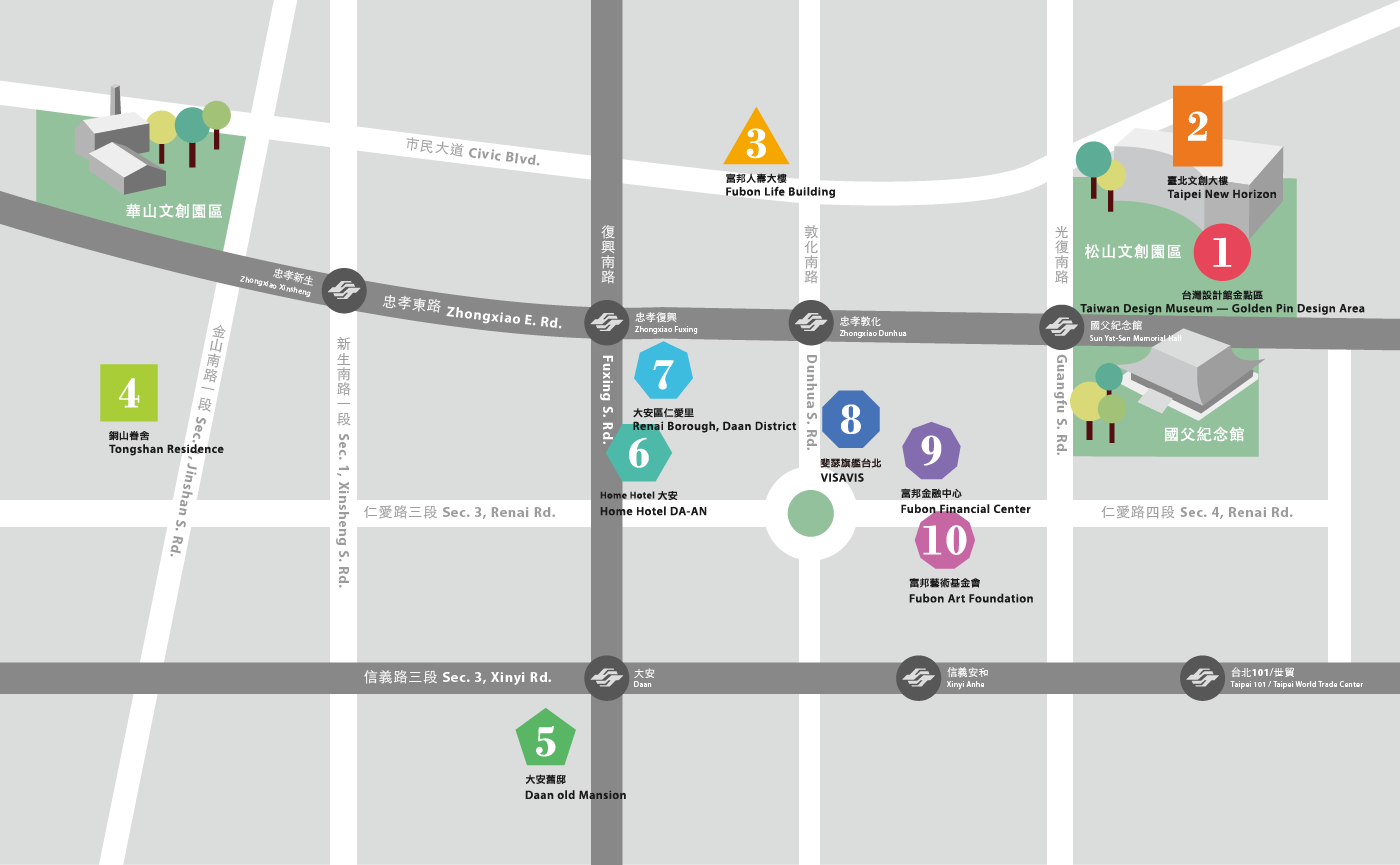



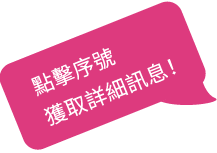
繼故宮後唯一!
《粉樂町台北東區當代藝術展》慶祝十周年的同時,也邁入了下一個重要里程碑!富邦藝術基金會與Google宣布合作,透過Art Project成為亞洲第一家上線的無牆美術館,也是台灣繼故宮博物院後唯一獲得認證的單位。雲端科技給了無牆美術館全新的定義和更多元的樣貌,從此任何人都能穿越國界、時空,細細欣賞粉樂町!
Google Cultural Institute虛擬博物館目前上線超過8萬件來自700多個文化、藝術機構提供的典藏品,讓喜愛藝術的民眾在家就能探索全球著名的博物館,飽覽世界各地頂尖藝術機構珍藏的藝術品。超高像素的珍藏讓用戶更能清晰看到細節、筆法和畫像神態。《粉樂町》儲存於Google雲端的集體記憶,第一波已有近400件的藝術展品上線,歷年精采展品、佈展、訪談透過線上導覽一次回味。
Since the inception in 2001, Fubon Art Foundation’s Very Fun Park is an annual highlight of Taipei’s art scene. For ten summer, large-scale installations have sprung up in the parks and streets of Taipei. These sculptures and installations by artists from all over the world only bloom across Taipei’s Eastern District for three months—but now, there is a way for art lovers to see these works anywhere, anytime. To mark the tenth anniversary of Very Fun Park, the Fubon Art Foundation has teamed up with Google Cultural Institute to place nearly 400 piece of artwork online. Thanks to the Google Cultural Institute, visitors can visit exhibition of the past ten years simply by going online!



